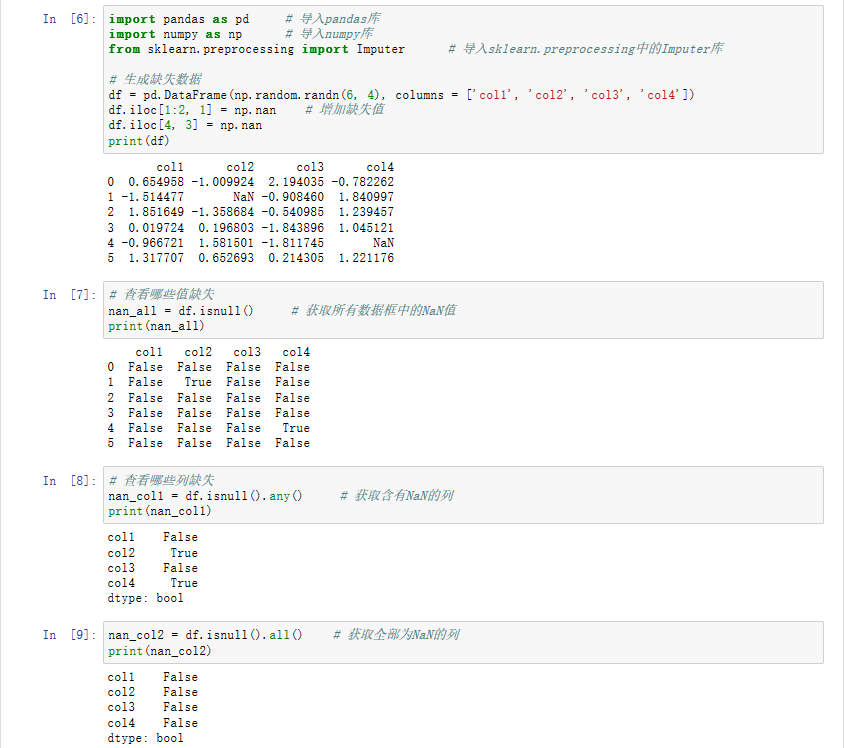我开始目前使用露天CMS。 我需要它必须包含一些特性,如我的内容模式,创造“方面”:
Aspect:
property 1 : String
property 2 : int
property 3 : int
property 4 : long
此外,它必须包含两个其由任一性质的数目的多个性质:
Format:
FormatProperty1: int
FormatProperty2: int
FormatProperty3: int
Metadata:
list1: List<String>
list2: List<String>
MetadataProperty 3: boolean
我尚未创建既不是简单的内容模型,也不在露天的一个方面。 根据我以前的关系数据库中的知识,我认为上述结构表之间的关联。 我怎样才能进行,在露天内容模型一个方面或更多?
你应该看看这里第一。 创建于露天的模型是远离的DB。
这只是良好定义的XML。 你必须先写XML,然后通过引导初始化。
例如XML模型cmodModel.xml:
<?xml version="1.0" encoding="UTF-8"?>
<!-- Definition of new Model -->
<model name="custom:custommodel" xmlns="http://www.alfresco.org/model/dictionary/1.0">
<!-- Optional meta-data about the model -->
<description>Custom Model</description>
<author>Whatever</author>
<version>1.0</version>
<!-- Imports are required to allow references to definitions in other models -->
<imports>
<!-- Import Alfresco Dictionary Definitions -->
<import uri="http://www.alfresco.org/model/dictionary/1.0" prefix="d" />
<!-- Import Alfresco Content Domain Model Definitions -->
<import uri="http://www.alfresco.org/model/content/1.0" prefix="cm" />
<import uri="http://www.alfresco.org/model/system/1.0" prefix="sys" />
</imports>
<!-- Introduction of new namespaces defined by this model -->
<namespaces>
<namespace uri="custom.model" prefix="cmod" />
</namespaces>
<!-- Lists <String> -->
<constraints>
<constraint name="cmod:liststring1" type="LIST">
<parameter name="allowedValues">
<list>
<value>value 1</value>
<value>value 2</value>
</list>
</parameter>
</constraint>
<constraint name="cmod:liststring2" type="LIST">
<parameter name="allowedValues">
<list>
<value>value 1</value>
<value>value 2</value>
</list>
</parameter>
</constraint>
</constraints>
<types>
<!-- Document Type -->
<type name="cmod:customDoc">
<title>Document</title>
<description>Document</description>
<parent>cm:content</parent>
<mandatory-aspects>
<aspect>cmod:aspectBase</aspect>
<aspect>cmod:aspectFormat</aspect>
<aspect>cmod:aspectMetadata</aspect>
</mandatory-aspects>
</type>
</types>
<!-- Definition of custom aspects -->
<aspects>
<aspect name="cmod:aspectBase">
<title>Aspect base properties</title>
<properties>
<property name="cmod:property1">
<title>p1</title>
<description>p1</description>
<type>d:text</type>
</property>
<property name="cmod:property2">
<title>p2</title>
<description>p2</description>
<type>d:int</type>
</property>
<property name="cmod:property3">
<title>p3</title>
<description>p3</description>
<type>d:int</type>
</property>
<property name="cmod:property4">
<title>p4</title>
<description>p4</description>
<type>d:text</type>
</property>
</properties>
</aspect>
<aspect name="cmod:aspectFormat">
<title>Aspect Format</title>
<properties>
<property name="cmod:formatProperty1">
<title>fp1</title>
<description>fp1</description>
<type>d:int</type>
</property>
<property name="cmod:formatProperty2">
<title>fp2</title>
<description>fp2</description>
<type>d:int</type>
</property>
<property name="cmod:formatProperty3">
<title>fp3</title>
<description>fp3</description>
<type>d:int</type>
</property>
</properties>
</aspect>
<aspect name="cmod:aspectMetadata">
<title>Aspetto Metadata</title>
<properties>
<property name="cmod:metadataProperty1">
<title>mp1</title>
<description>mp1</description>
<type>d:text</type>
<constraints>
<constraint ref="cmod:liststring1" />
</constraints>
</property>
<property name="cmod:metadataProperty2">
<title>mp2</title>
<description>mp2</description>
<type>d:text</type>
<constraints>
<constraint ref="cmod:liststring2" />
</constraints>
</property>
<property name="cmod:metadataProperty3">
<title>mp3</title>
<description>mp3</description>
<type>d:boolean</type>
</property>
</properties>
</aspect>
</aspects>
</model>
模型上下文命名CMOD-模型的context.xml
<?xml version='1.0' encoding='UTF-8'?>
<!DOCTYPE beans PUBLIC '-//SPRING//DTD BEAN//EN' 'http://www.springframework.org/dtd/spring-beans.dtd'>
<beans>
<!-- Registration of new models -->
<bean id="extension.dictionaryBootstrap"
parent="dictionaryModelBootstrap"
depends-on="dictionaryBootstrap">
<property name="models">
<list>
<value>alfresco/extension/model/cmodModel.xml</value>
</list>
</property>
</bean>
</beans>
希望能帮助到你。
让我尝试了一些额外的信息添加到@根据您的评论Alch3mi5t的答案。 我在这里使用一个虚构的商业案例。
基本上,露天模型包括3个部分:约束,类型和方面。 另外,我会在组合加入协会。
在露天(你可能会错误地认为它是一个“记录”),每个节点都有一个类型。 因此,这类型有属性(“列”)。 所以,你有你的基地型,让我们说这就是所谓的供应商 。 它有两个道具,名称及税号(字符串和INT)。 你的类型定义将如下所示:
<type name="myCompany:vendor">
<title>Vendor</type>
<parent>cm:folder</parent>
<properties>
<property name="myCompany:vendorName">
<title>Vendor name</title>
<type>d:text</type>
</property>
<property name="myCompany:vendorTaxID">
<title>Vendor Tax ID</title>
<type>d:int</type>
</property>
</properties>
</type>
有去你的类型,而不是不像列VENDORNAME和字符串和整型的vendorTaxID一个数据库表。
比方说,你现在必须添加的税号一些约束 - 简单的regex例子。 所以,你必须这样定义的约束:
<constraint name="myCompany:taxIdConstraint" type="REGEX">
<parameter name="expression">
<value>^ID[1-9](\-[1-9])*</value>
</parameter>
<parameter name="requiresMatch">
<value>true</value>
</parameter>
</constraint>
现在,我们只需要修改我们的taxId属性:
<property name="myCompany:vendorTaxID">
<title>Vendor Tax ID</title>
<type>d:int</type>
<constraints>
<constraint ref="myCompany:taxIdConstraint">
</constraints>
</property>
所以,你现在摆在该属性的约束。
- 看点现在,你想一个方面-在露天,这将是,如果你想要一些额外的列添加到该表。
否 - 更好的类比,你想从你的原始表的关系。 所以,如果它为空,它为空。 但另外,它创建了一个1-1(通常)关系到你的记录,其他表。
这里的底线是,你永远不会孤单添加任何东西到表方面 - 它只是谈到作为除基本类型。 示例方面:
<aspect name="myCompany:myAspect">
<title>Address aspect</title>
<properties>
<property name="myCompany:city">
<title>City</title>
<type>d:text</type>
</property>
</properties>
</aspect>
你可以让这个强制性的方面,如果你(后只是属性部分)添加到您的类型定义:
<mandatory-aspects>
<aspect>myCompany:myAspect</aspect>
</mandatory-aspects>
现在,你可以添加一个“记录”到你的基地“表”,如果你加入这个作为强制性的方面,则每条记录将有3个支柱:名称,税号和城市。 如果不是强制性的,则每条记录将有两个基本列,但你可以添加第三选择等等。 编程方式或手动,无所谓。
- 协会现在,我们还可以在混合添加associatons:这是只有两个节点(或“记录”)之间的联系。 所以,在你的类型的属性部分后,您可以添加协会部分。 比方说,你想连接(部分)供应商它们的创造者(主要客户)。
您添加到您的类型:
<associations>
<association name="myCompany:keyAccountManager">
<source>
<mandatory>false</mandatory>
<many>true</many>
</source>
<target>
<class>cm:person</class>
<mandatory>false</mandatory>
<many>true</many>
</target>
</association>
</associations>
你有它! 现在,您可以连接一些或所有卖方在您的供应商表各自KAMS(这样你就可以通过电子邮件,当有些事情正在发生与卖方KAMS,让我们说)。 基本上,你的供应商表和用户表之间的1-N连接。 1-N这意味着你可以将一个供应商连接到许多人。 您也可以在不同的供应商连接到一个人。 (许多参数)。
您还可以添加协会一方面,以相同的方式:
<aspect name="myCompany:stateAspect">
<properties>
...
</properties>
<associations>
<association name="myCompany:myState">
<source>
<mandatory>true</mandatory>
<many>true</many>
</source>
<target>
<class>cm:folder</class>
<mandatory>false</mandatory>
<many>true</many>
</target>
</association>
</associations>
</aspect>
现在,您可以创建普通露天文件夹(厘米:折叠式)和状态之后,他们的名字,并有每个城市的连接到他们的一个文件夹。 (不是最好的方式,但显示我的观点。)所以这个协会是强制性的,如果添加这种其它方面(不是原单),这不是强制性的意思是,你必须创建一个关联。
因此,与组合发挥到你所需要的。
所以,现在你有你的示例模型:
<?xml version="1.0" encoding="UTF-8"?>
<model name="myCompany:myContentModel" xmlns="http://www.alfresco.org/model/dictionary/1.0">
<description>Custom Content Model</description>
<author>Zlatko Đurić</author>
<published>2013-03-22</published>
<version>1.0</version>
<imports>
<import uri="http://www.alfresco.org/model/dictionary/1.0" prefix="d"/>
<import uri="http://www.alfresco.org/model/content/1.0" prefix="cm"/>
</imports>
<namespaces>
<namespace uri="myCompany.model" prefix="bv"/>
</namespaces>
<constraints>
<constraint name="myCompany:taxIdConstraint" type="REGEX">
<parameter name="expression">
<value>^ID[1-9](\-[1-9])*</value>
</parameter>
<parameter name="requiresMatch">
<value>true</value>
</parameter>
</constraint>
</constraints>
<types>
<type name="myCompany:vendor">
<title>Vendor</type>
<parent>cm:folder</parent>
<properties>
<property name="myCompany:vendorName">
<title>Vendor name</title>
<type>d:text</type>
</property>
<property name="myCompany:vendorTaxID">
<title>Vendor Tax ID</title>
<type>d:int</type>
<constraints>
<constraint ref="myCompany:taxIdConstraint">
</constraints>
</property>
</properties>
<mandatory-aspects>
<aspect>myCompany:myAspect</aspect>
</mandatory-aspects>
<associations>
<association name="myCompany:keyAccountManager">
<source>
<mandatory>false</mandatory>
<many>true</many>
</source>
<target>
<class>cm:person</class>
<mandatory>false</mandatory>
<many>true</many>
</target>
</association>
</associations>
</type>
</types>
<aspects>
<aspect name="myCompany:myAspect">
<title>Address aspect</title>
<properties>
<property name="myCompany:city">
<title>City</title>
<type>d:text</type>
</property>
</properties>
<associations>
<association name="myCompany:myState">
<source>
<mandatory>true</mandatory>
<many>true</many>
</source>
<target>
<class>cm:folder</class>
<mandatory>false</mandatory>
<many>true</many>
</target>
</association>
</associations>
</aspect>
</aspects>
</model>
There, I hope this helps you.



![Prime Path[POJ3126] [SPFA/BFS] Prime Path[POJ3126] [SPFA/BFS]](https://oscimg.oschina.net/oscnet/e1200f32e838bf1d387d671dc8e6894c37d.jpg)
